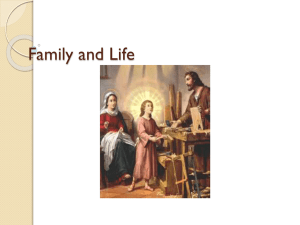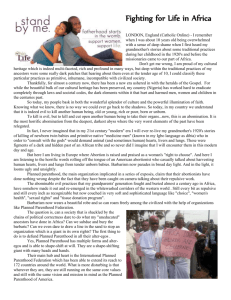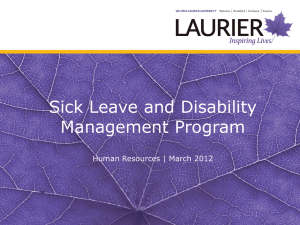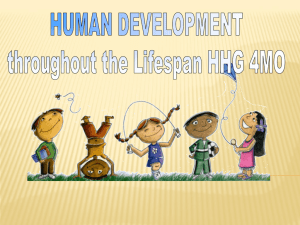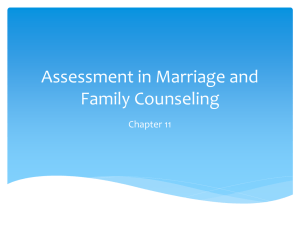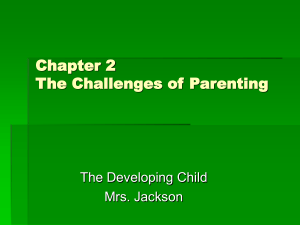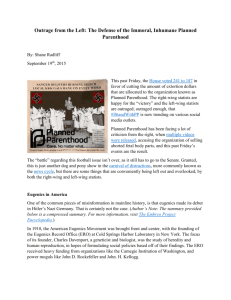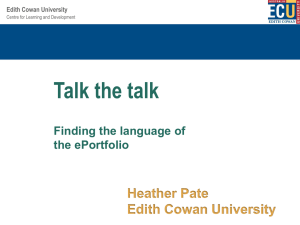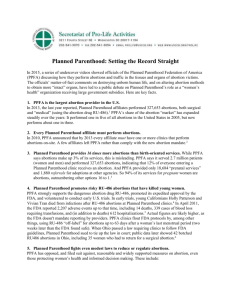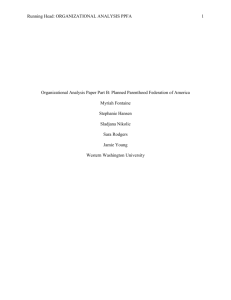Transition to parenthood 9.1.13
advertisement
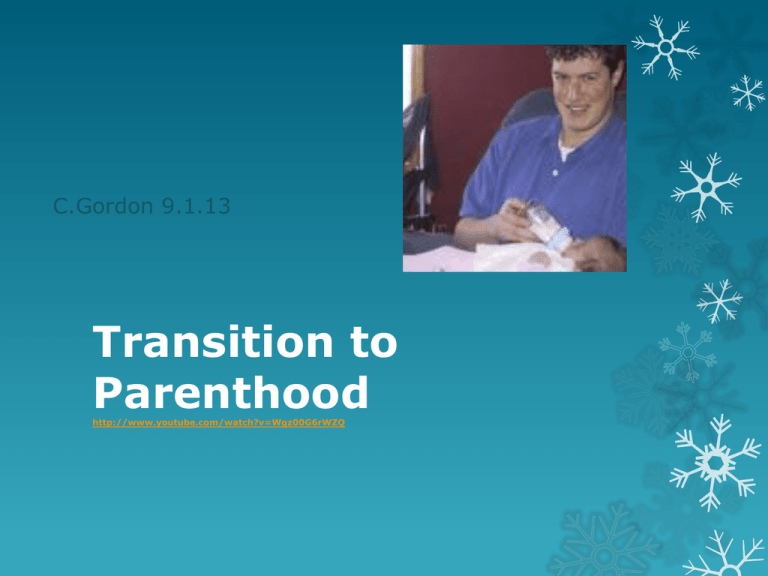
C.Gordon 9.1.13 Transition to Parenthood http://www.youtube.com/watch?v=Wgz00G6rWZQ Questions to ask before becoming a parent Am I ready to be a parent? Do I feel as though I can deal with the additional responsibilities of caring for a child? What kind of lifestyle do I have? What kinds of changes will I need to make, such as adjustments to the amount of time I spend with friends? Do I feel good about making lifestyle changes to care for a baby? What are my personal goals and priorities concerning having a family, going to school, and/or having a career? ‘His’ and ‘Hers’ Transition issues The transition into parenthood brings common stresses; however, some of these stresses may be more significant or challenging to women while others are of more significance to men (Brotherson 2004). http://www.youtube.com/watch?v=NPEaoHmtKqs “Couples making the transition to parenthood experience challenges that can threaten the quality and stability of their relationships and the love that they have for each other” (Polomeno 2006, 37-38). http://www.youtube.com/watch?v=AEjfMyphqQQ Transition Issues List Lack of sleep and tiredness Changing diapers Expensive baby clothes Financially providing for the family Lack of time for watching television Dissatisfaction with personal appearance Concern about spouse’s needs Unpredictable shifts in mood and anxiety Cost of child care Time together as a couple Loss of free time for self and social activities Change in work situation Overstimulation of child Transition Issues List Anxiety about child illnesses Increased chores and housework Decline in sexual interest Nutritional needs of the child Personal doubts and parental competence of skills Recovery from labour and delivery Intrusive in-laws Marital communication Changes in body figure Financial preparation for child’s schooling Individual stress and roles and responsibilities Couple disagreements about roles Decisions about child care Other considerations As a result of changes in attitude to family size and women’s greater participation in education and work, more people are having children later in life and having smaller families. The number of births outside marriage has increased dramatically over 30 years – from 12% in 1980 to 44% in 2007 (National statistics 2009). While many couples believe that having a baby will bring them closer together, most research suggests that couples become less satisfied with their relationship after having children (Belsky & Pensky, 1988). Relationship support Research evidence shows that the quality of the parental relationship has a powerful impact on parenting and outcomes for children. The transition to parenthood is a particularly important time to provide practical and relationship support for both parents. http://www.oneplusone.org.uk/ Who is most at risk? Not all couples experience a decline in relationship satisfaction after having a baby. Cowan and Cowan (1995) have calculated an increase in relationship satisfaction for between 18% and 30% of couples becoming parents. The best predictor of couple relationship quality in parents is the quality of their relationship before the baby arrives Less time for the relationship Cowan and Cowan asked parents to divide a circle (called the Pie) according to how they saw themselves and their roles in life. The piece of the pie representing parenthood increased twice as much for women as for men. Identity as a parent grew larger, the partner/lover piece grew smaller for both men and women. (Cowan et al, 1985). Impact on the development of the child The perinatal period is of vital importance for the future development of the child. The prenatal stage and the first year of a child’s life are particularly important for emotional, cognitive and behavioural development. There is a clear positive link between the quality of the parents’ relationship and the quality of their parenting (Erel & Burman, 1995). Impact on well-being and health of the couple The quality of the couple relationship has been shown to have a major impact on the physical and mental health of both partners (McAllister, 1995). Divorced men and women are more likely to smoke or drink heavily. There is also the close association found between couple relationship difficulties and poorer psychological well being. It is important that couples are aware that their relationship may be particularly vulnerable during this transition. The impact of stress on a relationship may be reduced when couples have an understanding of what is happening; can talk through the issues; and make appropriate plans on how to manage the transition (Belsky & Pensky, 1988). The Couple connection http://www.youtube.com/watch?v=Z2LSqWmV0FY&feat ure=relmfu http://www.youtube.com/watch?v=3PQjIB2aSys&featur e=relmfu The Parent Connection The Parent Connection has been created by One Plus One the UK’s leading relationships research organisation. They have been investigating what makes relationships work or fall apart for the last forty years. http://theparentconnection.org.uk/ http://www.youtube.com/watch?v=YajAaJTBNpQ References: Belsky, J. & Pensky,E. (1988) Marital change across the transition to parenthood. Marriage and Family Review, 12 (3-4), 133-156. Carlson, M. & McLanahan, S. (forthcoming) Strengthening unmarried families: Could enhancing couple relationships also improve parenting? Journal of Policy Analysis and Management. Cowan, P., Cowan, C., Heming, G., Garrett, E., Coysh, W., Curtis-Boles, H. & Boles, A. (1985) Transition to parenthood: His, hers, and theirs. Journal of Family Issues, 6, 451-481. Cowan, C. & Cowan, P. (1995) Interventions to ease the transition to parenthood; Why they are needed and what they can do. Family Relations, 44: 412-4 Cowan, P. & Cowan, C. (2000) When partners become parents: The big life change for couples. Mahwah, NJ: Erlbaum. Erel, O. & Burman, B. (1995) Interrelatedness of marital relations and parent-child relations: A meta-analytic review. Psychological Bulletin, 118,1, 108-132. Gielen, A., O’Campo, P., Faden, R., Kass, N. & Zue, Z. (1994) Interpersonal conflict and physical violence during the childbearing year. Soc Sci Med, 39: 781-787. Markman, H. & Hahlweg, K. (1993) The prediction and prevention of marital distress: an international perspective. Clinical Psychology Review, 13, 29-43. Mezey, G. & Bewley, S. (1997) Domestic violence and pregnancy. British Medical Journal, 314, p1295 McAllister, F. (ed) (1995) Marital breakdown and the Health of the Nation, 2nd Edition, One Plus One: London. One plus One. The transition to parenthood – the “magic moment”. http://www.oneplusone.org.uk/ICOR/TopicPageMain.php?Page=Parenthood Accessed 3.1.12. Spanier, G., Rovine, M. & Belsky, J. (1983) Stability and change in marriage across the transition to parenthood. Journal of Marriage and the Family, 42, 825-839. Twenge, J.M, Campbell, W.K & Foster, C.A. (2003) Parenthood and marital satisfaction: a metaanalytic review , Journal of Marriage and Family, 65, 574-583.
